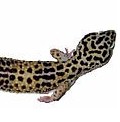A lot of people are gaining interest into the hobby of raising exotic pets. Among these exotic pets includes the leopard gecko. However, there are still some who would want to raise tarantulas, snakes, and other varieties of leopard geckos. However, these types of exotic animals may present danger especially for children. However raising a leopard gecko will not be a problem because this creature is generally harmless for humans. If you want to raise this kind of gecko, then you should take note of some of this important information about leopard gecko.
Leopard gecko's natural habitat is a rocky and extremely dry desert. The natural habitat of leopard geckos range from sand, to hard clay, to gravel terra; this makes the leopard gecko live majority of their life on the ground or beneath it. Underneath the rocks or in small burrows is the most common hiding place of a leopard gecko. Life in the desert for leopard geckos are spent hiding during day time, and waking up and becoming active at night.
Owners of leopard gecko must try very hard to keep the environment of their pet as close to their natural habitat as possible. Making an effort of making a 'natural home' for your leopard gecko will certainly make them happy and will keep them healthy.
Before you start making up a home for your leopard gecko, you need to take note of the basic requirements. Ideally, the tank of your leopard gecko should be 40 gallons. If you own more than one leopard gecko, remember not to house two male leopard geckos together. Leopard geckos are territorial and two male geckos housed together will certainly fight. If you plan to own more than one leopard gecko, vivarium for them to live in must be proportionally larger.
Leopard geckos must have adequate vertical space for them to climb. A hiding place for your leopard gecko is also very important, especially if it is time for them to shed off their skin. The best place for their hiding place is a humid dark box. In order to keep their hiding box humid, you can put some sand or soil and damp it daily. Adding up some materials to your gecko's vivarium to keep its environment very natural as possible will also be very helpful in keeping your gecko happy. Putting in sand as substitute for soil is not recommended because the geckos may ingest it together with their food. Ingested sand may cause intestinal blockage which is very harmful to your gecko's health.
You may also include plants that are safe for your leopard geckos. Putting in some logs will also benefit your gecko. Just see to it that the materials you add on to you gecko's vivarium is stable for your gecko to climb on. Note that your gecko will climb on anything and everything inside their vivarium.
The temperature of the home of your gecko must be kept warm. At day time, the ideal temperature is around 85-90 degrees Fahrenheit. During night time, a slightly cooler temperature of around 75 degrees Fahrenheit is just fine.
